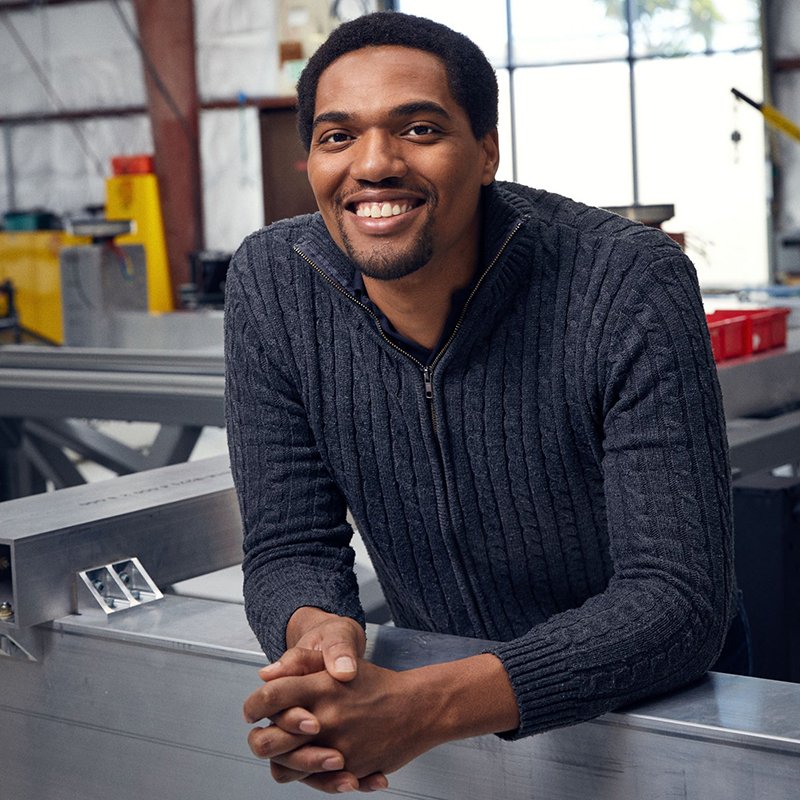Alum Designs and Builds Hybrid Electric Autonomous Aircraft for Elroy Air

This article is reprinted with permission of the American Institute of Aeronautics and Astronautics (AIAA). It first appeared in the April 2020 issue of Aerospace America, a publication of the AIAA.
When Terik Weekes was a baby on the island of Nevis in the Caribbean, his parents would drive him to the nearby airport where he would fall asleep as he watched the planes take off and land. Weekes, 29, has loved aircraft ever since.
He attended Embry-Riddle Aeronautical University in Florida and now works for Elroy Air, a cargo drone startup in San Francisco. He leads design and construction of Chaparral, a hybrid-electric autonomous aircraft that will ferry express packages, spare parts, disaster relief and military supplies nearly 500 kilometers, or roughly the distance between San Francisco and Los Angeles.
Learning about Aircraft
In high school I took a cooperative education opportunity at Honeywell Aerospace in Phoenix that motivated me to become an engineer. I graduated from Embry-Riddle in 2013, with a bachelor’s degree in aerospace engineering.
While at Embry-Riddle, I gained exposure to unmanned aircraft by leading a team competing with the Association for Unmanned Vehicle Systems International’s Student Unmanned Aerial Systems Competition as well as interning at DynaWerks, an unmanned aerial systems company in Daytona Beach, Florida. I spent the next three years with the test and integration team at Airware, a drone analytics company, where I met Clint Cope (Elroy Air co-founder and vice president of engineering) who later invited me to join Elroy Air.
From Power System to First Flight
I started at Elroy Air in February 2017. The first months were spent trying to find a power system and configuration for the aircraft. We iterated on the design, tested propulsion concepts, developed a subscale model, and prototyped a payload system until we had a concept that made sense from both business and performance perspectives. In August 2018, we finalized the outer mold line of the prototype aircraft, and on Aug. 14, 2019, we flew the first Chaparral prototype.
Chaparral is significant because it is designed as a fully autonomous system from loading to delivery. It is a cost-effective and fuel-efficient aerial logistics system that requires little infrastructure. There are plenty of situations where this is desperately needed, such as the many natural disasters we see more commonly today.
Aviation in 2050
Aircraft with hybrid and electric propulsion systems will share the sky with traditional fuel aircraft. The configuration and appearance of those electrified aircraft will be different in ways we do not know yet — much like how there were several generations of jet aircraft.
I believe the same will be true for electric and hybrid electric aircraft. It is hard to predict what the 2050 generation of electrified aircraft will look like. Unmanned aircraft will be prevalent, performing routine tasks such as cargo delivery. Coupled with electrification, this will allow for lower cost and lower-impact transportation. Most exciting for me will be the impact on logistics.
The same one- or two-day delivery times that we take for granted today in the U.S. will be lower cost and accessible in developing nations and difficult-to-access regions where transporting goods via boat or truck may be more resource intensive or high risk.